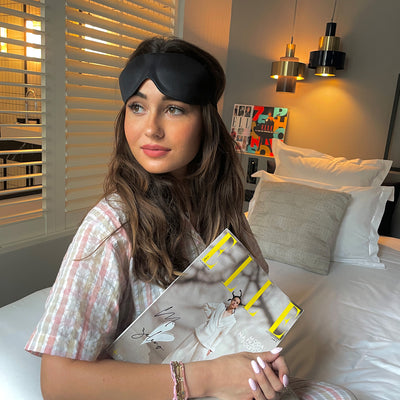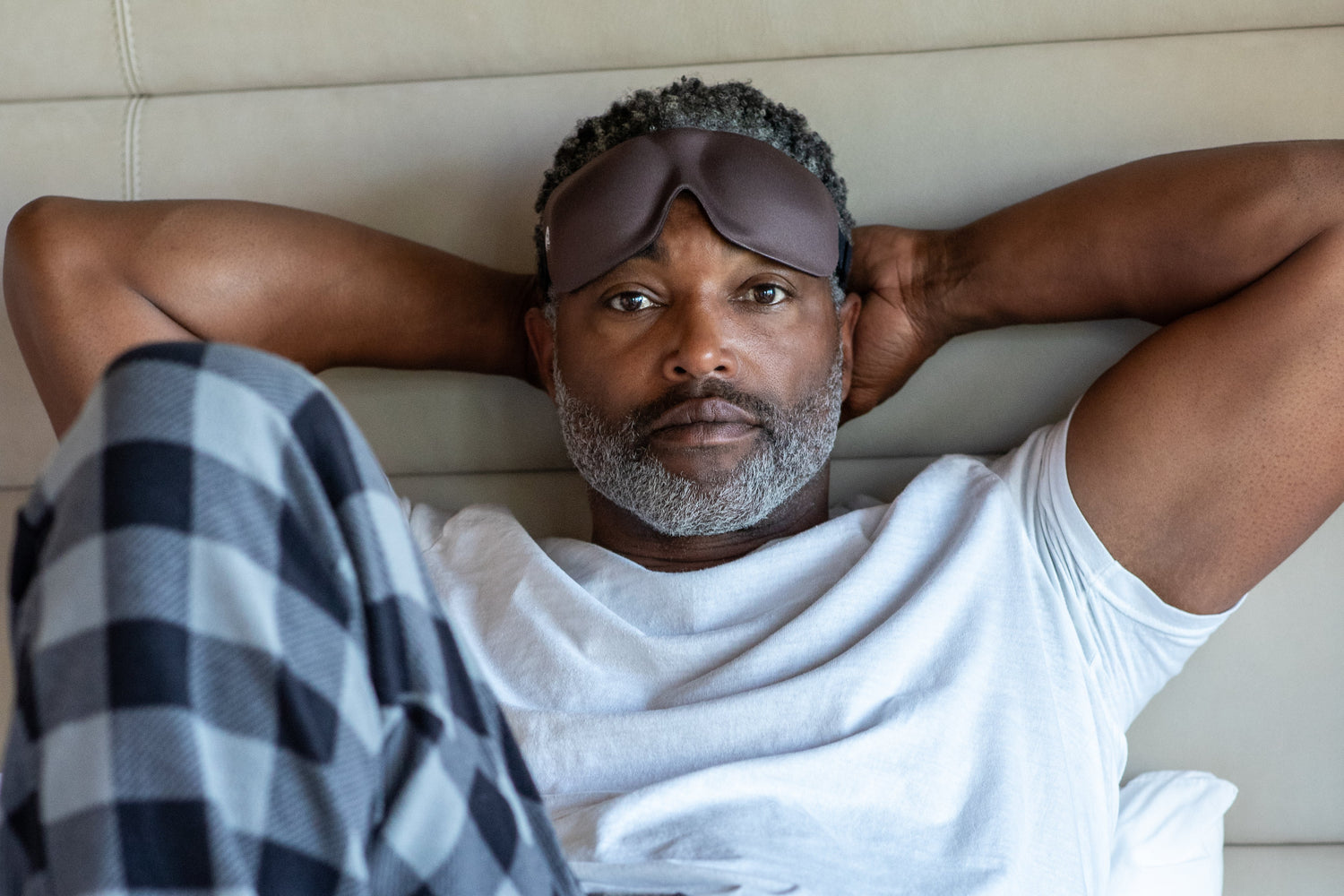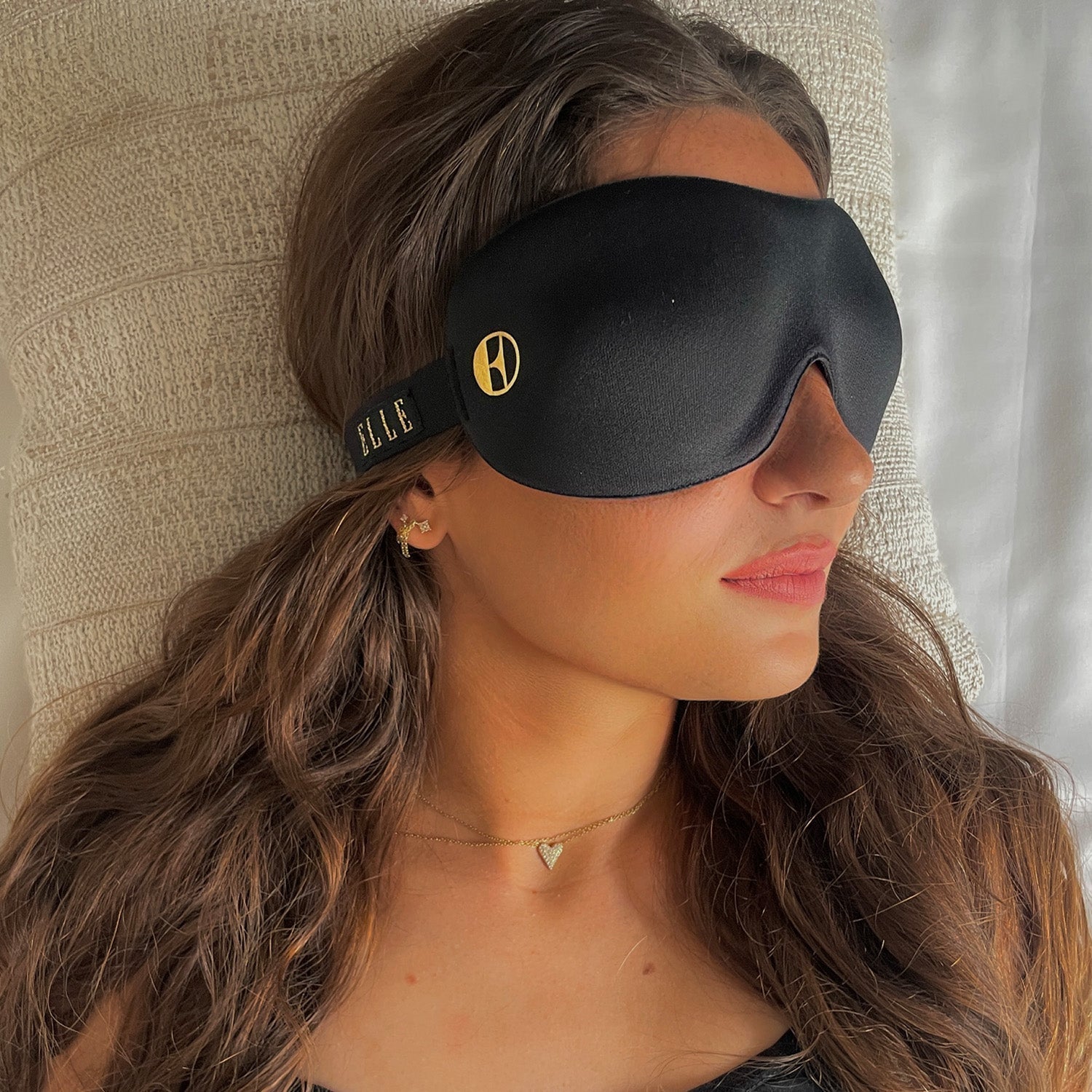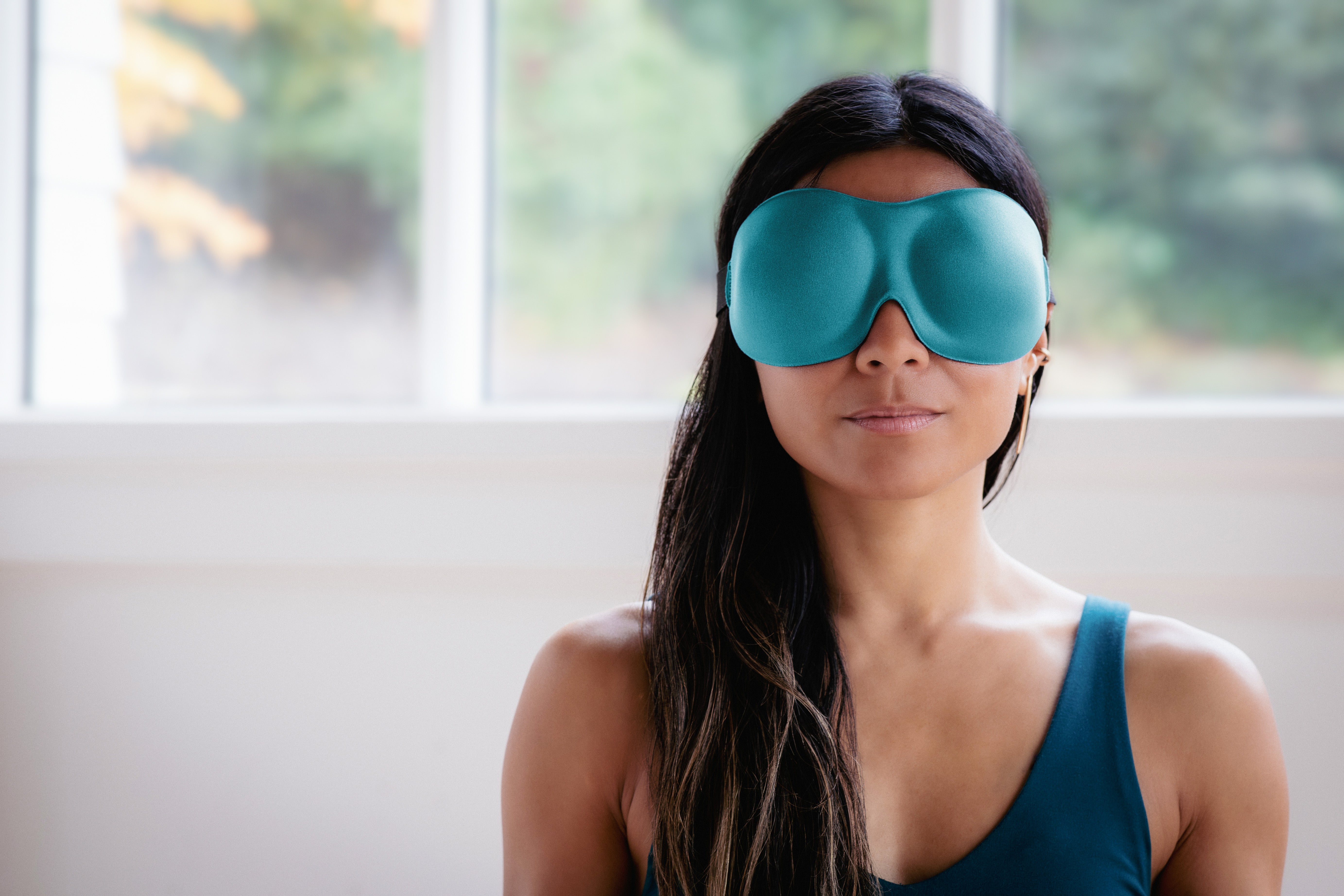High performers know that sleep and performance are inseparable.
When you are well rested, you think faster, focus longer, and lead with calm confidence. When you are sleep deprived, even small decisions feel heavy, and context switching gets costly.
The good news is that better rest is a skill you can train. With a few practical habits and a simple tool like the Nidra sleep mask for professionals, you can protect deep sleep and show up at work with your best judgment intact.¹
The Link Between Sleep and Cognitive Function
Sleep is not passive downtime; it is active brain maintenance. During deep and REM sleep, your brain consolidates memories, prunes noisy connections, stabilizes emotions, and clears metabolic waste. That work sets up the next day's performance.¹
Here is how consistent, high-quality sleep moves the leadership needle.
Sharper focus and working memory:
Better sleep improves your ability to hold details in mind, filter distractions, and switch tasks with less friction. That means smoother meetings and fewer do-overs.
Faster, more accurate decisions:
Rested executives analyze tradeoffs more clearly, weigh risk more rationally, and avoid impulsive calls that create downstream rework.¹
Creative problem solving:
REM-rich nights enhance pattern recognition and insight, useful for strategy, product thinking, and negotiations.¹
Emotional regulation and presence:
Sleep reduces reactivity, which helps you listen fully, deliver hard feedback with empathy, and keep teams steady during change.¹
Energy and stamina:
Quality sleep supports consistent energy across long days, so your afternoon output looks like your morning output.¹
A simple baseline helps. Most adults do best around seven to nine hours per night, measured across the week, not only weeknights.² If you are traveling or having intense days, treat sleep like recovery for an athlete. Protect it as a key input to performance.

Why High Performers Are Prioritizing Rest
The modern executive schedule is full of context shifts, long travel days, and back-to-back calls. That reality can chip away at sleep without a plan.
The leaders who maintain an edge treat rest as a strategic investment with real return. They design systems that make good nights easier and bad nights rarer.
Try these executive sleep tips to stack the odds in your favor.
Set non-negotiable wind-down anchors:
Choose a consistent target bedtime window. Thirty to sixty minutes before it, dim the lights, close remaining loops, and shift your mind toward rest.
Use light with intention:
Morning sunlight within an hour of waking helps anchor your circadian clock.³ At night, reduce bright overheads and screen glare. This is where a true blackout eye mask pays off when you cannot control the room because light in the late evening suppresses melatonin and delays sleep timing.⁴
Create a caffeine and alcohol plan:
Stop caffeine at least six to eight hours before bed. A controlled study found that 400 mg of caffeine taken even six hours pre-bedtime still reduced total sleep time.⁵ Many clinicians extend the buffer to roughly eight hours in real life to be safe.⁶ Reserve alcohol for earlier in the evening, and keep it light, because it fragments the second half of the night and erodes sleep quality.⁷
Keep a simple pre-sleep routine:
A warm shower, a few minutes of breath work, and a notebook brain dump calm rumination. Consistency beats complexity.
Protect the first and last hour:
Avoid late-night email firefighting and early doom scrolling. Use those windows for planning, reflection, and gentle movement.
Leverage strategic naps, not accidental ones:
Ten to twenty minutes can restore alertness without grogginess. Mask up, set a timer, and keep it earlier in the afternoon.⁸
Travel smart:
On red eyes and hotel nights, aim for darkness, cool temperature, and predictability. A contoured blackout mask, a light layering system, and a familiar wind-down ritual make unfamiliar rooms feel familiar.
These habits pay off because they reduce friction. Sleep becomes less about willpower and more about environmental design. Add a tool that reliably blocks light, and your routine becomes portable.
That is how high performers keep momentum during tight weeks, global travel, and product launches.

How Nidra Helps Executives Sleep Deeper
Light control is the fastest way to improve sleep quality, especially for busy professionals. Even ordinary room light before bed suppresses melatonin and shifts your internal clock, which can delay sleep and fragment the night.⁴
You cannot always change hotel curtains, airplane cabin lighting, or a partner’s lamp. You can always control what covers your eyes.
Here is why executives choose the Nidra sleep mask for professionals as a simple performance boosting tool. Research shows that wearing an eye mask at night can improve next-day alertness and memory encoding, which supports better decision-making and cognitive performance.⁹
True blackout, anywhere:
Nidra’s contoured design blocks ambient light in planes, ride shares, hotels, and the home. Consistent darkness helps your brain shift into sleep mode faster and stay there longer.⁴
Pressure-free eye cups:
The 3D cups let you blink freely and protect lashes. That comfort matters when you wear a mask for full nights, power naps, or a long flight.
Adjustable, secure fit:
A comfortable, customized fit prevents slipping, which means fewer wakeups to readjust. Set it once and forget it.
Lightweight and breathable:
Soft materials feel comfortable against the skin and pack flat. Toss it in your laptop bag, and it becomes a dependable part of your travel kit.
Supports focus rituals:
Use the mask for ten minutes of box breathing or a quick meditation before a high-stakes meeting. Darkness reduces sensory input, which settles the nervous system and primes clear thinking.

A simple routine to try this week.
Evening reset, ten minutes:
Dim the lights, put your phone to charge outside the bedroom, then journal three lines. What went well, what needs attention tomorrow, and what you are grateful for.
Mask on, breathe down, five minutes:
Lie down, place your Nidra mask, and breathe in for four, hold for four, out for six. Repeat until your shoulders drop.
Morning anchor, five minutes:
Get outside for daylight. No sunglasses if comfortable, and let your eyes take in the sky. This helps set tonight’s melatonin rhythm and supports energy regulation across your day.³
On travel days, make the routine even simpler. Mask, timer, and a white noise app. Nap for fifteen minutes before landing, or use the mask on a red eye to simulate darkness when cabin lights pop on.
Your goal is consistency. Your brain learns the cue. Sleep follows.
Bringing It All Together
If you want better leadership outcomes, start with sleep and performance. Build a practical routine, use light to your advantage, and carry a mask that makes darkness effortless.
The Nidra sleep mask for professionals turns any room into a sleep-friendly space, which means fewer off days and more steady decision-making.
Better rest does not require a full lifestyle overhaul. It only needs small, repeatable actions that you can apply in real life. Choose one habit from the list above, add your Nidra mask to your bedside and travel kit, and give it seven nights. Notice your focus, your mood, and your meetings.
When sleep improves, leadership gets easier.
Looking for a quick next step?
Pick a bedtime window you can hit most nights, cut caffeine after lunch, and put your Nidra mask by the pillow. That combination is simple, portable, and effective. Your calendar will feel lighter, your thinking will feel clearer, and your team will feel the difference.
Footnotes
Adam J. Krause et al., “The Sleep-Deprived Human Brain,” Nature Reviews Neuroscience 18, no. 7 (2017): 404–418, https://doi.org/10.1038/nrn.2017.55.
Centers for Disease Control and Prevention, “FastStats: Sleep in Adults,” May 15, 2024, https://www.cdc.gov/sleep/data-research/facts-stats/adults-sleep-facts-and-stats.html.
Sat Bir S. Khalsa, Mary E. Jewett, Christian Cajochen, and Charles A. Czeisler, “A Phase Response Curve to Single Bright Light Pulses in Human Subjects,” Journal of Physiology 549, no. 3 (2003): 945–952.
Joshua J. Gooley et al., “Exposure to Room Light before Bedtime Suppresses Melatonin Onset and Shortens Melatonin Duration in Humans,” Journal of Clinical Endocrinology and Metabolism 96, no. 3 (2011): E463–E472, https://doi.org/10.1210/jc.2010-2098.
Christopher L. Drake et al., “Caffeine Effects on Sleep Taken 0, 3, or 6 Hours before Going to Bed,” Journal of Clinical Sleep Medicine 9, no. 11 (2013): 1195–1200.
Sleep Foundation, “Caffeine and Sleep,” last updated 2024, https://www.sleepfoundation.org/nutrition/caffeine-and-sleep.
Timothy Roehrs and Thomas Roth, “Sleep, Sleepiness, Sleep Disorders and Alcohol Use and Abuse,” Sleep Medicine Reviews 5, no. 4 (2001): 287–297, https://doi.org/10.1053/smrv.2001.0162.
A. Brooks and D. J. Lack, “A Brief Afternoon Nap Following Nocturnal Sleep Restriction, Which Nap Duration Is Most Recuperative?,” Sleep 29, no. 6 (2006): 831–840; M. J. Tietzel and D. J. Lack, “The Short-Term Benefits of Brief and Long Naps Following Nocturnal Sleep Restriction,” technical report, 2001.
Viviana Greco et al., “Wearing an Eye Mask During Overnight Sleep Improves Episodic Learning and Alertness,” Sleep 46, no. 3 (2023): zsac305.






Leave a comment
This site is protected by hCaptcha and the hCaptcha Privacy Policy and Terms of Service apply.